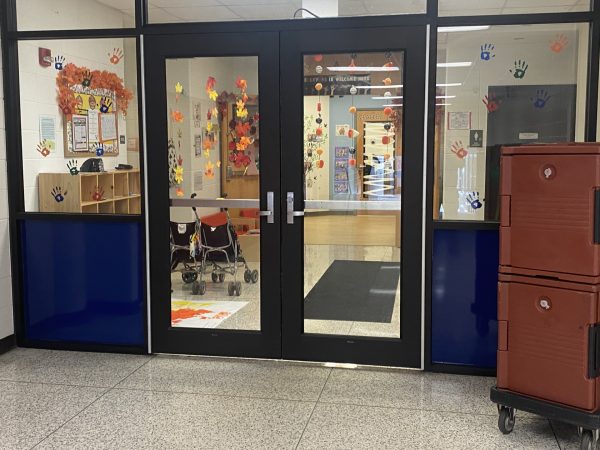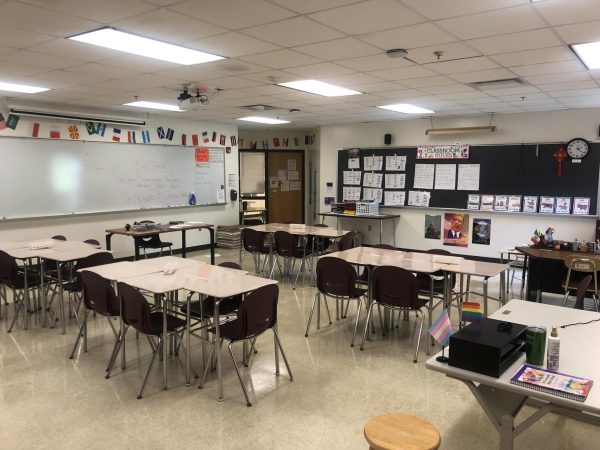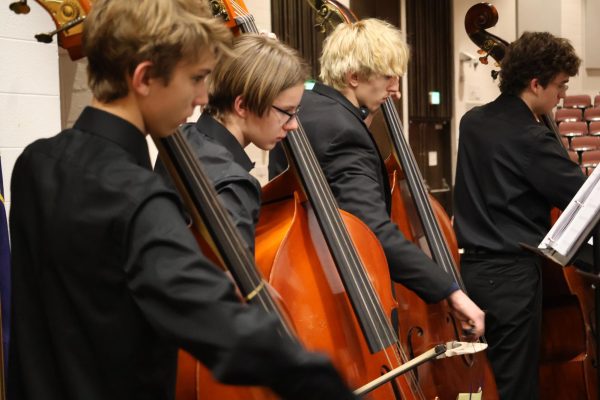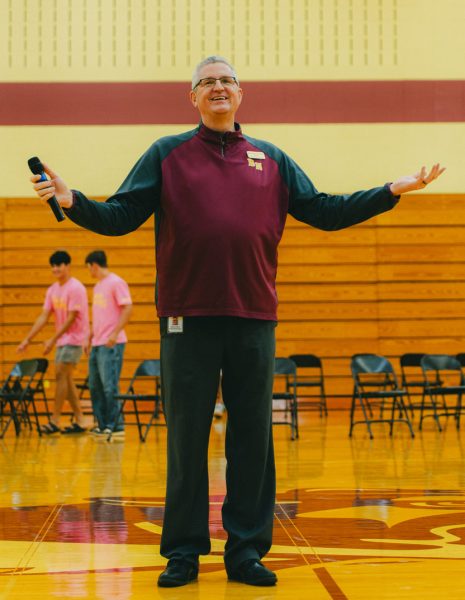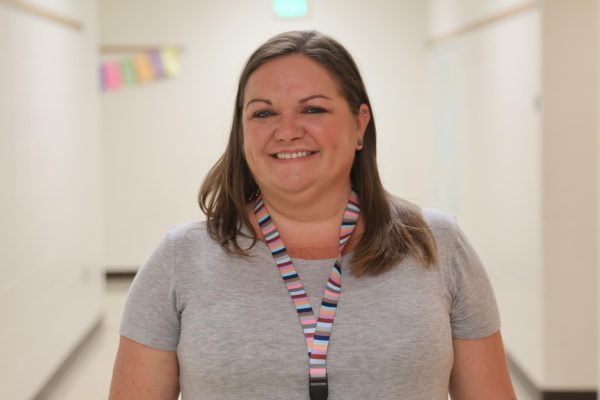Checking In: Students’ Thoughts on E-learning
Several North students discuss their experiences with contingency learning.
E-learning has thrown a wrench in the student body’s end-of-semester plans, but despite COVID-19 and all of the serious health, financial, social, etcetera issues that have come with it, students are making the most of a difficult situation. Even though online learning has not been an ideal way to end the semester, some students have been able to find a silver lining.
Avery Njau, sophomore, is one such student. Online learning has presented Njau with unique difficulties, but she has found upsides to online learning.
“My online workload has been a lot more than my usual workload,” Njau said. “Especially in the first three weeks or so, I had six to seven hours of work a day.” This is almost double Bloomington North’s four-hours-a-day guideline. At first, Njau said, she enjoyed the comfort of being able to work on her classes from home, but the workload squashed some of that enjoyment.
However, despite the work, Njau said that, “It’s good to be able to work at your own pace, I think that’s very beneficial to some people.”
“It gives me something to do,” Njau said of online learning. “Even though I’m looking forward to summer break, I think there’s value in using your brain and applying it in some way. Otherwise, we’re just sitting around all the time.”
Njau also counts not having to get up early for school to be a significant plus, as is the reduced stress that comes with having no tests, finals, or worries about assignments being graded stringently. In a state of social distancing, contingency learning has also given Njau a way to safely stay social.
“I’ve gotten to work with other people on assignments,” Njau said, and said that she was able to communicate with her friends through working with them on their classes.
Although Georgia Pollard, junior, doesn’t share Njau’s views about online learning’s useful escape from boredom and isolation, she has still managed to find a silver lining. While Pollard’s workload hasn’t been comparable to Njau’s, saying that “It’s definitely a lot less than it was at school,” because “What would take me an hour to do in class takes me twenty minutes,” Pollard doesn’t see many positive sides of online learning because most of the work assigned to her feels extremely tedious.
“I feel like for most of my classes it’s busy work,” Pollard said. “It’s more keeping us occupied,” She added, expressing that she believes the workload is partially motivated by a desire to just get through the school year regardless of whether students are productive.
“It’s hard for me to be in the mindset of trying to learn,” Pollard also said, saying that she doesn’t feel like much of her classes’ material has stuck.
That being said, though, Pollard still sees pros of online classes than she wouldn’t have in a regular classroom. “Being allowed to do things at your own pace,” Pollard said, is particularly beneficial, as online learning gives her a more flexible and individualized schedule than she would otherwise have in the classroom.
For Wade Bartlett, senior, the biggest challenge of contingency learning has been finding motivation. The lack of a distinction between being at school and being at home has made it more difficult for Bartlett to be productive.
“Lack of separation leads to lack of motivation,” Bartlett said. Trying to limit how unproductive he is, Bartlett has tried to keep himself busy when he’s not working on his classes.
“When I procrastinate, because it’s inevitable, I try to be productive,” Bartlett said. “I’ve had time to learn stuff that’s not related to school.” Recent activities he has picked up include playing guitar and learning to use Microsoft Excel.
Aside from the listlessness that has crept in during online learning, Bartlett has found several silver linings for contingency learning.
“Being able to get enough sleep every night, that’s great,” Bartlett said. He also thinks that, although his workload is comparable to his normal one, the extra time and flexibility that comes with learning from home has made the workload more manageable, and he is much less stressed going into May than he would be during a normal school year.
Like Njau, Bartlett believes socialization is a notable benefit of online learning.
“Just doing discussions in Government or English has been helpful,” Bartlett said. Scheduled discussions and interactions with his classmates and teachers have helped give his days a rhythm.
“Having those fixed points helps ground my day,” Bartlett said.
One of Bartlett’s insights was that this is the best time for contingency learning to happen because classes, at least for him, are mainly review. If this was earlier in the semester, or last fall, handling lots of new material that is challenging under normal conditions would have proven much more stressful and chaotic.
All three students have implemented a schedule to help keep them grounded during online school days.
“I wake up at 7:50, eat breakfast, and then I get started on first period,” Njau said of her routine. She tries to switch which classes she’s working on at the normal bell times.
Pollard’s schedule has been similar. “I wake up, I eat breakfast, I have a little bit of time to myself, and then I do all my classes in order as I normally would during the school day,” Pollard said.
“I put on new clothes every day,” Bartlett said.
Looking ahead, the two returning students have different takes on e-learning’s potential impacts on the 2020-2021 school year.
“The last couple of months of the semester are usually pretty crucial in going over to the next years,” Pollard said of potential knowledge gaps. “So how are teachers going to compensate for that?”
Njau expressed confidence about similar concerns. “I think teachers will have lots of discussions about where to pick up,” Njau said.




